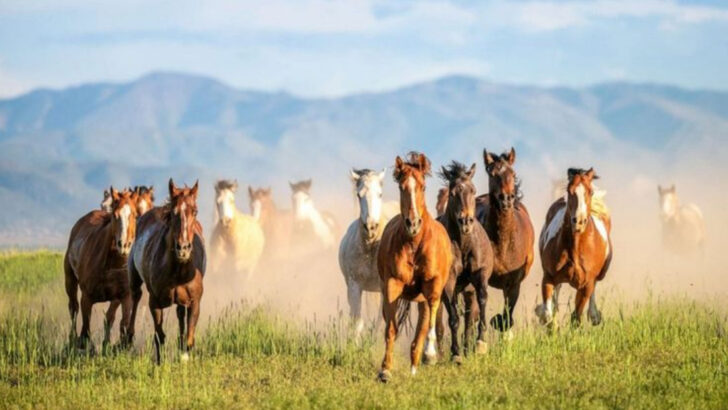Wild horses aren’t ghosts.
They’re real, raw, and still out there—thundering across the open land like living echoes of another time.
But with every hoofbeat comes a heap of misinformation.
People whisper stories about them—how they live, where they came from, what they “should” be doing. Some say they’re dangerous invaders. Others claim they’re delicate relics. The truth? It’s messier, wilder, and way more fascinating.
If you’ve ever pictured wild horses galloping through a desert storm or standing proud on a rocky ridge, this is your wake-up call. We’re busting through 12 myths that have clouded the legend for far too long.
Get ready. Some of what you think you know is about to get trampled.
Myth 1: All Wild Horses Are Mustangs
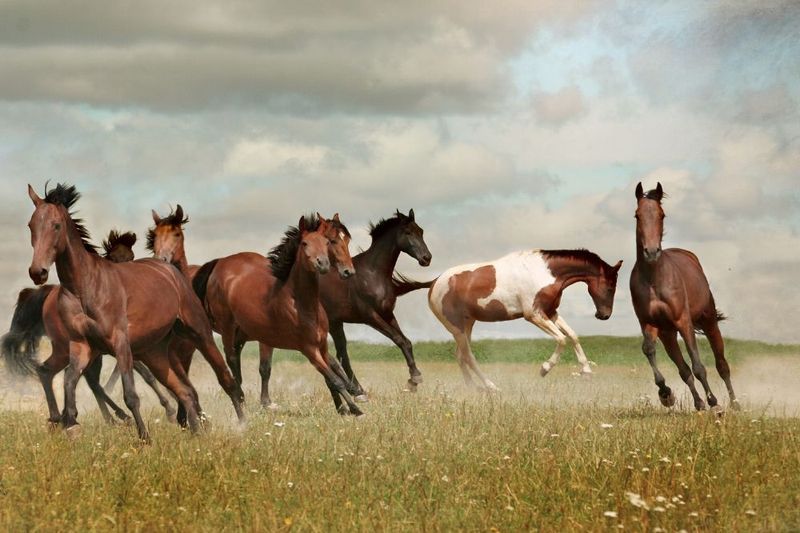
When people think of wild horses, Mustangs often come to mind. However, not every wild horse in the West is a Mustang. In reality, these horses are a blend of various breeds. Many were once domesticated and later released or escaped, contributing to the genetic diversity seen today. Mustangs are indeed a significant part, but they’re not alone.
Over time, these horses have mixed and adapted to their environments, resulting in a unique gene pool. This diversity ensures their survival in the wild, enabling them to thrive across different terrains and climates.
Myth 2: Wild Horses Are Native to America
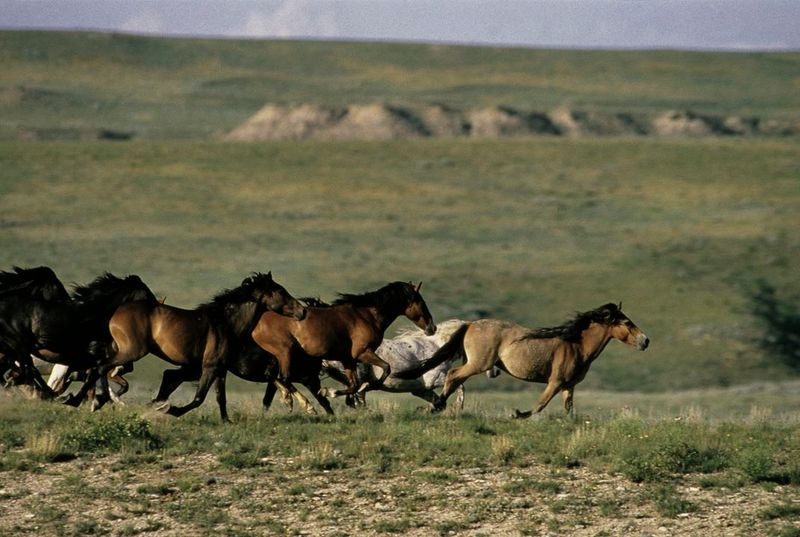
Contrary to popular belief, wild horses are not native to America. They are descendants of domesticated horses brought by European settlers. Horses originally existed in North America but went extinct around 10,000 years ago. The current wild horse population is descended from those reintroduced by Spanish explorers in the 16th century.
This makes them a re-established species rather than indigenous wildlife. Their presence has been a point of contention, raising questions about their impact on native ecosystems versus their cultural significance in American history.
Myth 3: Wild Horses Destroy the Environment
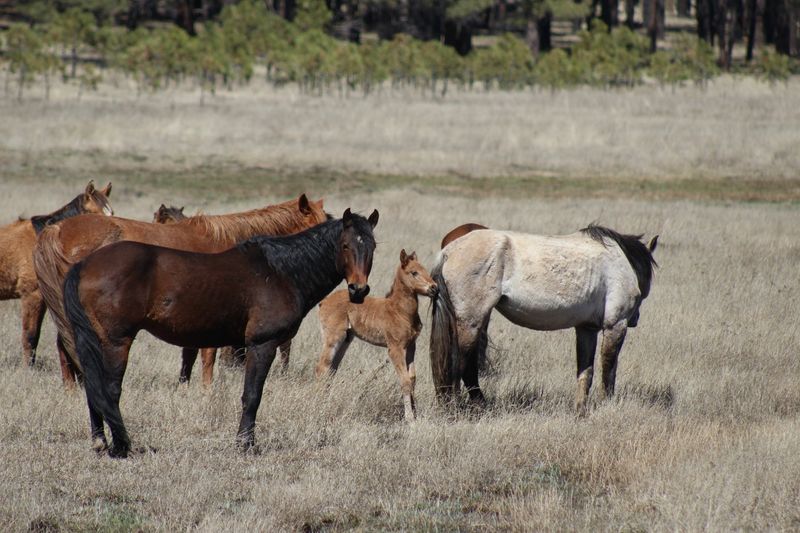
Many believe wild horses wreak havoc on the environment, but their impact is often exaggerated. While they do graze extensively, they can coexist sustainably with other wildlife. Studies show that their grazing patterns help maintain open grasslands, benefiting various species.
Efforts to control their populations through management practices aim to balance ecological needs. It’s crucial to understand the nuanced role they play in their habitats, rather than viewing them solely as ecological threats. Awareness and informed management can lead to harmonious coexistence.
Myth 4: Wild Horses Are Completely Untamed
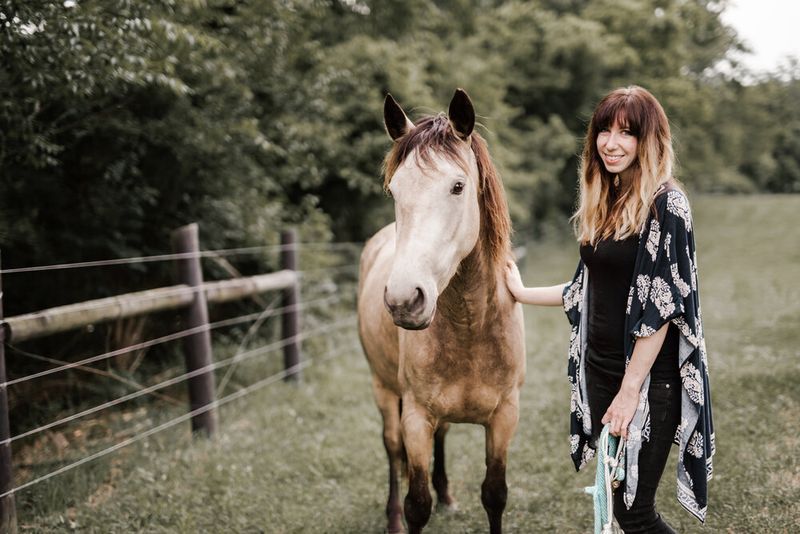
Despite being labeled as “wild,” these horses are not entirely untamed. Many are accustomed to human presence and exhibit behaviors indicating some level of tameness. Over generations, interactions with humans have made them more approachable.
In some areas, they are accustomed to being fed or watered by tourists or conservationists, further blurring the lines between wild and tame. It’s this adaptability that has allowed them to survive in diverse environments, sometimes even seeking human help during extreme conditions.
Myth 5: Wild Horses Are Aggressive

The image of wild horses as aggressive and dangerous is misleading. They are generally shy and avoid confrontation. Most of their interactions involve avoiding threats rather than engaging in aggressive behavior.
Instances of aggression are rare and typically occur only when they feel threatened or are protecting their young. Their natural inclination is to flee danger, which has been crucial for their survival in the wild. Understanding their behavior can help dispel fears and encourage coexistence.
Myth 6: Wild Horses Are Overpopulated
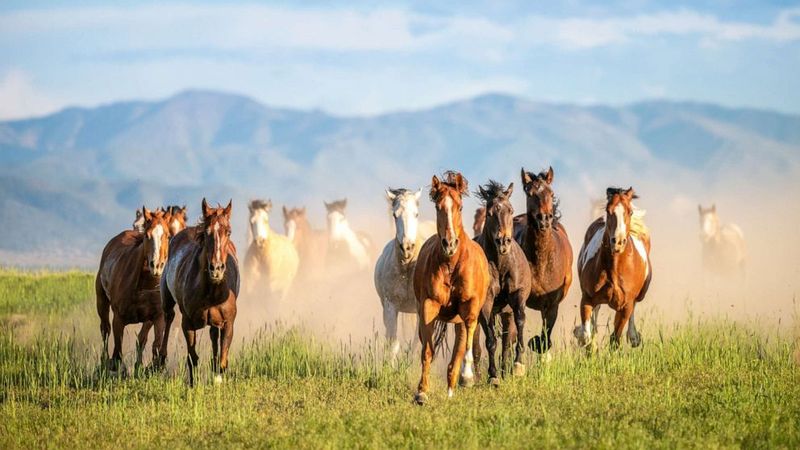
Concerns about wild horse overpopulation often arise, but these numbers are not as straightforward as they seem. Their populations are managed through roundups and fertility control methods to maintain ecological balance.
Reports of overpopulation can be misleading, often failing to account for available resources and natural predators. Management strategies aim to keep numbers sustainable, allowing these animals to thrive without overwhelming their habitats. In reality, many areas still have plenty of space and resources for them to flourish.
Myth 7: Wild Horses Don’t Contribute to Biodiversity
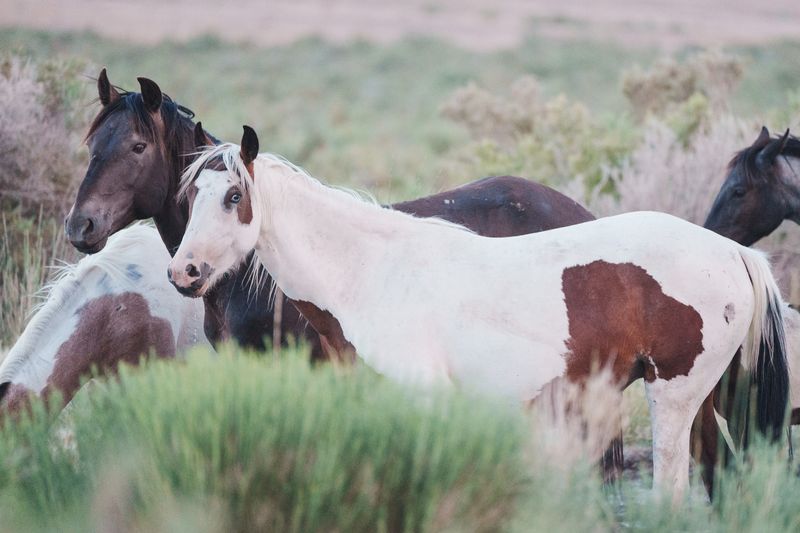
It’s a common myth that wild horses do not contribute to biodiversity. In fact, their grazing habits can promote plant diversity by spreading seeds and creating varied landscapes.
Their presence helps maintain the ecological balance, supporting the survival of other species. By moving through different terrains, they facilitate the growth of various plants, contributing to the richness of the ecosystem. Their role in biodiversity is often underestimated but remains significant for the health of their environments.
Myth 8: Wild Horses Can’t Survive Without Human Intervention
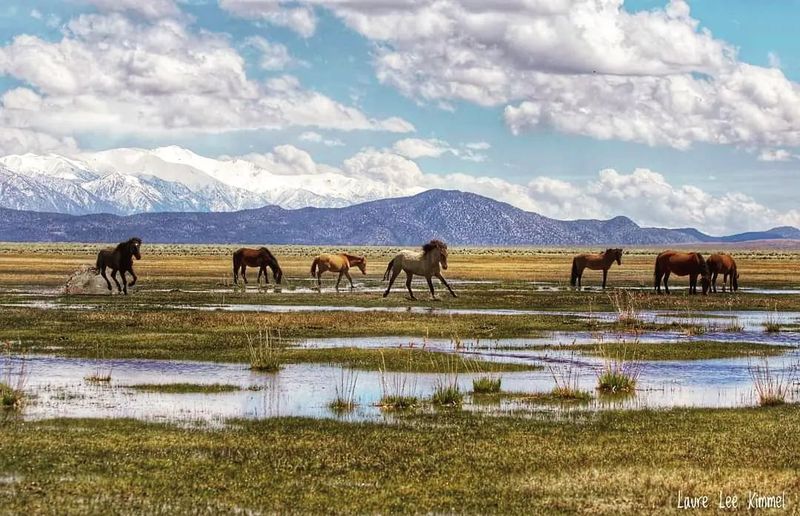
There’s a belief that wild horses need human help to survive, but they are adept at living independently. They’ve adapted to find food and water in challenging conditions, showcasing remarkable resilience.
While some herds benefit from conservation efforts, many thrive without assistance. Their survival skills are honed over generations, allowing them to navigate harsh climates and terrains. Understanding their capabilities can shift perspectives on their need for human intervention.
Myth 9: All Wild Horses Live in Herds
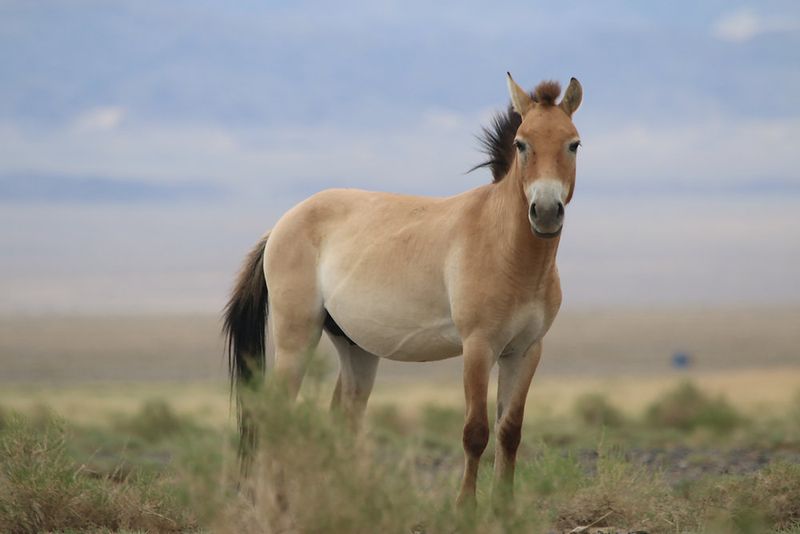
While herd life is common, not all wild horses live in large groups. Some choose a solitary existence, especially older or more independent ones. These horses can adapt to a solitary lifestyle, finding resources without herd support.
Herds provide protection and social structure, but independence is also valued in wild horse society. It’s this flexibility that contributes to their survival. The choice between herd life and solitude showcases the diverse personalities within wild horse populations.
Myth 10: Wild Horses Are a Threat to Ranchers

Contrary to some beliefs, wild horses are not a significant threat to ranchers. While they share resources such as grazing land, conflicts are often exaggerated. Proper land management can mitigate these issues, allowing coexistence.
Many ranchers have found ways to work alongside these horses, understanding their patterns and adapting accordingly. It’s possible for wild horses and livestock to share the land without detriment to either party. This myth often stems from misunderstandings rather than genuine conflict.
Myth 11: Wild Horses Are Starving Due to Lack of Resources
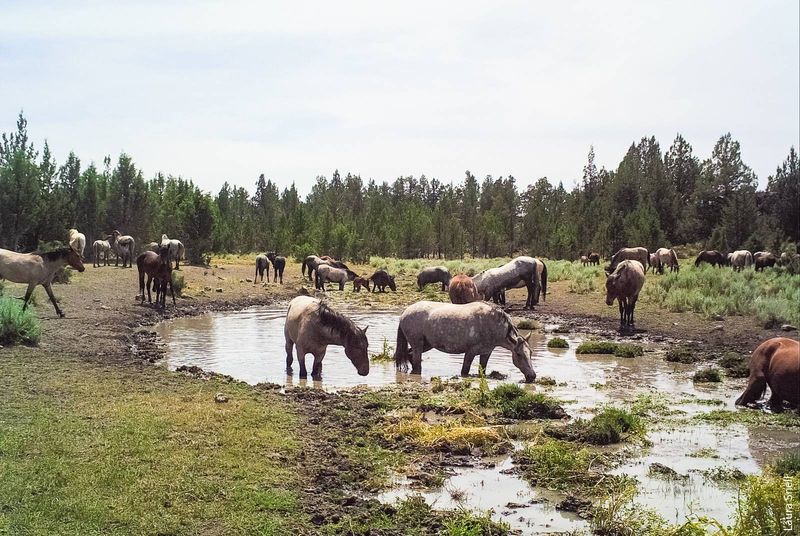
It’s a misconception that all wild horses face starvation. While some areas struggle with limited resources, many herds live in regions abundant with food and water.
Management practices aim to ensure herds do not exceed the land’s carrying capacity, preventing overgrazing. Monitoring and intervention help maintain balance, allowing wild horses to thrive without depleting resources. This myth overlooks the successful management efforts in place to support healthy horse populations.
Myth 12: Wild Horses Are Invincible to Predators
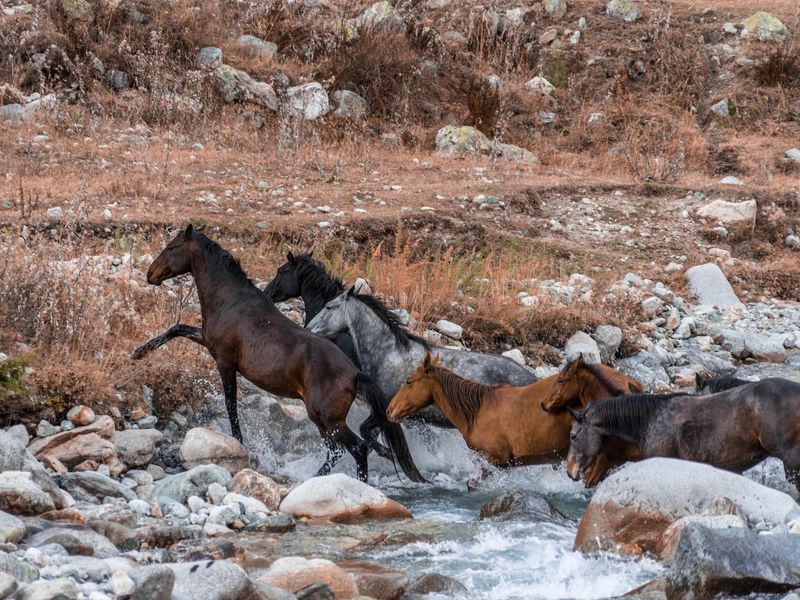
Wild horses are not invincible; they face threats from various predators. Coyotes, mountain lions, and even bears pose risks, particularly to young or injured horses. Despite these dangers, healthy herds have defensive strategies, such as forming protective circles.
Their survival depends on their ability to stay alert and respond to threats swiftly. Predation is a natural part of life in the wild, shaping behaviors and herd structures. This myth underestimates the challenges wild horses face daily.

